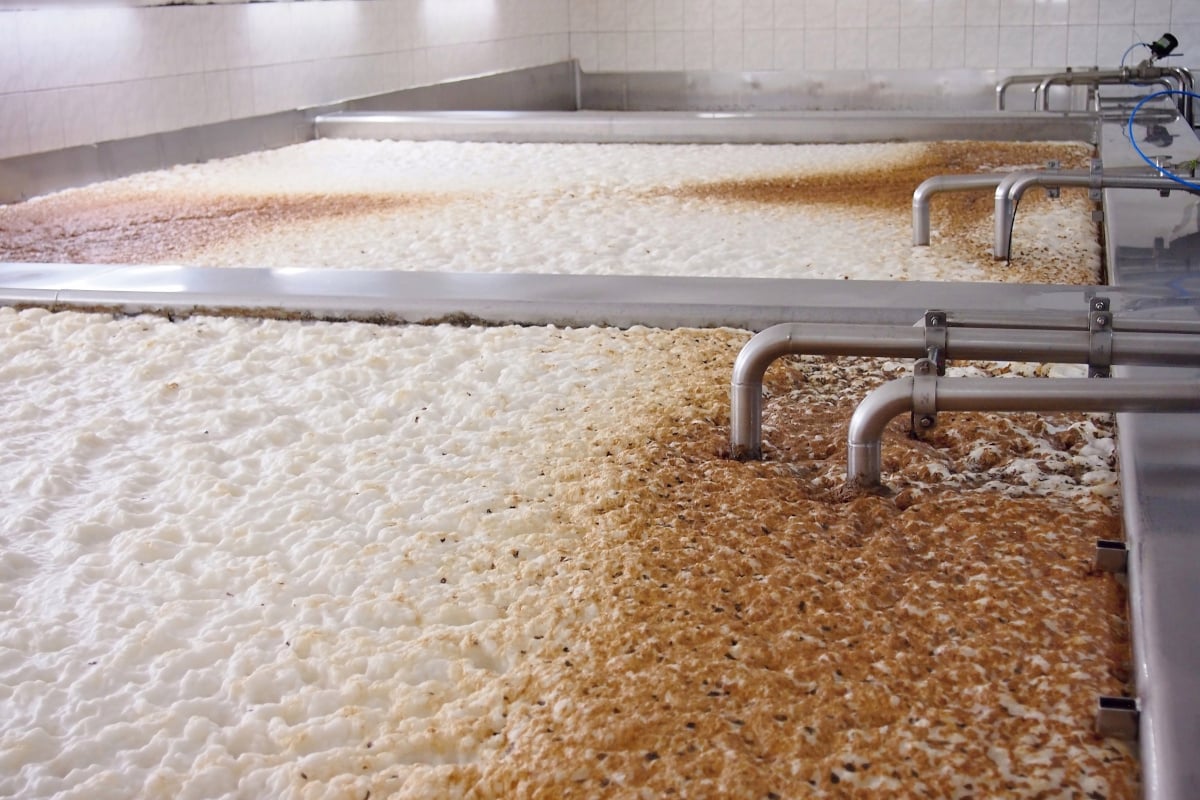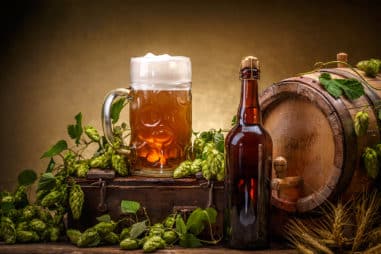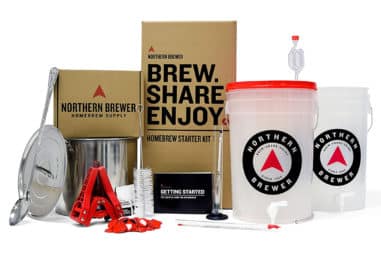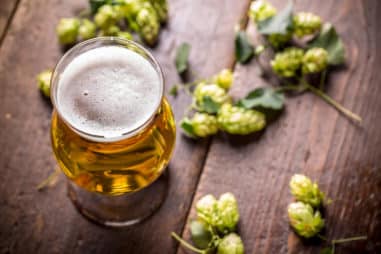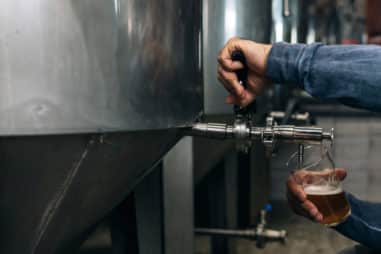Practically all ales employ the Top Fermentation process. Exceptions are entirely possible as the evolution of yeast is a never-ending process. Not to mention the advancements in bioengineering.
If you want to know more specific beers or if top fermentation is right for your brew, look into this data gathered specifically for you.
What Does Top Fermentation Do?
Top Fermentation is simply a fermentation method for wort. It is one of the ways by which you get that lovely, rich beer. Moreover, it gives you the following results:
- More Alcohol, Less Sugar
- Develop More Flavor
It is a method that has several signature factors:
- Top-Fermenting yeast,
- “Warm” fermentation temperatures, and
- traditionally used in open fermenters.
Top Fermentation Details
If you want a deeper understanding of Top Fermentation, you can study the following facts from research papers:
- The yeast is called Saccharomyces Cerevisiae. It tends to accumulate and float to the surface of the wort, hence the adjective “TOP.”
- Fermentation temperatures are optimal at around 95°F (35°C). But in actual practice, it is more along 68 to 70°F (20 to 21°C). These temperatures favor the release of the yeast’s flavor byproducts. The kind of fruitiness and bitter elements from esters and tannins respectively.
- Fermentation time is usually shorter as a consequence of the temperature. The hotter the ferment, the more likely you will get some form of spoilage for longer durations. You would see completion times ranging from 72 to 96 hours.
- You will have finished fermentation pH values of 3.85 to 4.15.
- The fermentation is not completely “clean” in the sense of comprehensive sugar conversion. This is likely due to the yeast being pushed up to the surface by CO2. Kind of like leaving the party early.
To learn more about the scientific literature, check out the work of Prof. B. Jelinek (1946). Top and bottom fermentation systems and their respective beer characteristics.
Which Type of Beer Is Top Fermented?
Brewers call the yeast of Top Fermented beer top-fermenting Ale yeast. It is at a point that you could reckon that the terms Ale and top-fermented beer are synonymous.
Are All Ales Top Fermented Beers?
Common knowledge on the topic of Top Fermented Beers leans in the direction of all Ales being top-fermented because of the yeast used. The kind of yeast used is of the same nature as those in bread, wines, and some other fermented foodstuff.
You could argue that beers like Altbier and Kölsch are kind of somewhere between the world of ales and lagers. But they are more of the exceptions rather than the norm. If you are not too familiar with these beers, a quick summary would be that they ferment in Lager-based temperatures.
Are Lagers Top Fermented Beers?
Lagers Beers cannot be classified as Top Fermented. This is because you would brew them from bottom-fermenting yeast.
Unfortunately, beers are tribal and belong to two major parties — Ale or Lager, top- or bottom-fermenting yeast. There are some independent types but their fundamental classification still has ties to the basic groups.
Which Beers Are Fermented With Top Fermenting Yeast?
Here is an overview of Beers that are brewed with Top Fermenting Yeast:
Weissbier. This white and wheaty beer is a symbiosis of lactobacillus and yeast.
Whites. White or Wheat, unfiltered, hazy, and cloudy with a splash of coriander and Curacao orange.
Gose. A nice wheat beer with just the right amount of salty — nothing near the level of brine.
Dubbel. Abbey and Trappist specialty beers for the zealous beer lover.
Tripel. If you are proud of your stronger-than-normal faith, try this golden beer from the same brewers who bring you the Dubbel.
Blondes. Brew this beer with pale malts to get that characteristically appealing visual. Strong versions are available for those who like to take things up a notch.
Spéciale Belge. The Belgian counter to English beers and German Pilsners. Created in 1905 with its distinct maltiness.
Bière Brut. A beer that sparkles like champagne. Its aging process mimics that of champagnes so the resultant similar qualities are not surprising.
Stout. Typically, roasted flavors are common, but if you like it sweet or bitter, there is a stout for you.
India Pale Ale. Originally popular in the Indian colonies, this type of beer is hopped well to ensure you know that hops is the hero.
Barley Wine. Not a wine but a strong ale. The noun wine is used to refer to its alcoholic (Alcohol-By-Volume) parallels with wines.
Ambers. Roasted malts give the distinct color of this beer.
Darks. Slightly sweet hints evoke memories of candy, toffee, raisin, and licorice. Don’t let the sweet descriptions bring you down, there are strong versions whose taste profile can range all the way up to slightly burnt.
Lambic, Mars, Faro, and Fruit Lambics. Not a perfect example of top-fermented beers since they belong in a special class. The yeasts that naturally develop these beers are close to the top-fermenting Cerevisiae.
Danziger Joppenbier. A ton of malt to create a wort that is boiled to almost forever (~10 hours), then spontaneously fermented for several months. It is one of the more peculiar beers in this lineup.
And most specialty beers enjoy the benefits of top-fermenting yeast.
What Is Open Top Fermentation?
If you want to do some old-school fermentation, you can try Open Top Fermentation. As the name suggests, it is all about open-to-the-air fermentation. In contrast to closed fermentation that is done in sealed vessels. It is a kind of fermentation process that leverages the natural inclination of top-fermenting yeast.
One of the basic equipment used in open-top fermentation for moderately-sized batches was (and still is) wide, shallow pans. They are also known as “coolships.”
If you are interested in the more intricate implementations of open-top fermentation, you can read about:
- Yorkshire Square
- Burton Union System
What Is a Yorkshire Square?
Talking about old-timers, Yorkshire Squares are vessels that used to be made of wood or stone. In a more contemporary setting, you would observe that these “squares” use alloys or composites.
The defining features of this fermentation vessel are:
- It has two compartments — an Upper and Lower deck.
- The compartments are separated by a partition with a choke-point — a relatively small opening around a meter in width (~3 feet).
How Does the Yorkshire Square Work?
Top Fermenting Yeast will ascend from the lower deck to the upper deck. The rising of the yeast is a result of a combination of its aggregation and it riding the release of carbon dioxide bubbles. Any entrained beer in the yeasty foam gets drawn back down through “organ” pipes leading back to the lower level.
The wort can also be mechanically circulated to improve yeast suspension and clumping.
The above-mentioned situations present the following opportunities:
- Skimming and reuse of yeast for the next batch, and
- ultimately, the lower deck retains relatively clear beer since the majority of particles should stay in the upper deck.
What Is the Burton Union System?
This system looks like a monstrosity made by a mad scientist. It employs the following configuration of vessels and troughs:
- A top trough. Used for the retention and collection of expelled yeast head.
- An array of interconnected barrels — traditionally made of wood.
- A bottom trough. Used for the collection of fermented liquid.
It essentially follows the same operational concept of the other vessel/systems: recycle yeast and retain clear beer.
Open Top Fermentation vs. Closed Fermentation
Open Top Fermentation can seem like a great method but it has its pros and cons when contrasted with Closed Fermentation.
Here is a quick look at their differences:
| Open Top | Closed | |
| Yeast Reusability | Easily accessed and harvested since it is open | You’ll need to undergo yeast washing |
| Ease of Contamination | • Use filtered fresh air to avoid contamination of large batches
• Watch out for insects and vermin access |
As long as the vessel remains sealed there should be a minimal chance of infection. |
| Carbon Dioxide Management | Natural or Mechanical exhaust needs to be provided for large batches | CO2 can easily be piped for disposal or storage |
| Outgassing | Undesirable gases escape readily | The chance of reabsorption of undesirable gases is higher because of restricted airflow |
| Can Easily Undergo Spontaneous Fermentation | If needed for extended periods, Yes | No |
Bigger and more complicated systems like Burton Union System can be quite challenging to clean because of the barrel arrays.
The reasons above should capture why you should or should not do open-top fermentation. But if you are a small homebrewer, avoiding contamination at all times can be a challenge in itself. That is why it is recommended that lesser-experienced brewers should stick to closed systems.

